My pike problem started during the summer of 2007 in northwest Saskatchewan. It was my first trip to Canada to fly fish for pike and grayling, and I was kind of flying by the seat of my pants. Unsure what to use, I managed to tie up some serviceable streamers prior to my trip, and, while some would prove to work just fine, the first words out of the mouth of my guide, a member of the Dene First Nation in the region, were, “Too small.”
“Too small?” I replied, looking at what I believed to be an oversized streamer — probably a Zonker or a Muddler of some sort, maybe a size 2. “How can that be too small?”
The guide took out his fly box and held up a yellow-and-white streamer pattern that looked to me to be about the size of a juvenile duck. He shook the fly in his hand and the feathers that streamed off the bend of the hook undulated in the subtle boreal breeze. “This is the right size. And it has to move in the water. A lot.”
For comparison, his “duck fly” was tied on a size 4/0 heavy-shanked hook. I was hog hunting with a pellet gun. Nevertheless, I managed to hook some very nice pike, including my first-ever 41-inch trophy that grabbed my guide’s duck fly about a second after it hit the water. I also caught some very nice pike on smaller flies. In fact, I’d say that my most dependable fly for the trip was a size 2 black Woolly Bugger. More on that in a bit.
But first, what makes a great pike fly? I’m not about to presume that I’m some sort of expert — I’m a pike dilettante. And pike flies? I’m definitely not the authority. But, thanks to my trips north over the years, I know a few folks. And when they talk about pike flies, I listen. So, take it from the pros. Here’s what makes a pike fly great:
A pike pro in the southern Yukon
Marek Brudny is a guide out of Dalton Trail Lodge in the Yukon. He guides anglers from the lodge for everything from native rainbows and Arctic grayling to beefy lake trout in the fertile and abundant waters of the southern Yukon. It’s wild country full of rushing rivers and massive mountain and boreal lakes. But Marek’s favorite fish to target in the Yukon wilderness? Northern pike.
And for him, the best flies have a big profile, and they move well in the water. A few years back, I fished with Marek on a fairly remote boreal lake about a 90-minute drive into the woods on some sketchy backcountry roads from the lodge. It was early August — not ideal for the region’s pike that tend to go a bit tight-lipped during the heat of summer (as in most places in Canada, pike fishing is best in May and June and again starting in late August and September). But Marek was confident we could move some fish. Just as importantly, the Yukon wind had come up, and the little lake hidden in the spruce forest offered a bit of a reprieve from the near-constant gales that were blowing through during my visit.
And, to his credit, Marek was right. He was right about the pike, and he was right about the flies. As I opened my fly box, he immediately gravitated to the larger flies that had either long saddle-hackle feathers or long lengths of rabbit strips hanging off the shank. Both tying materials made the fly “swimmy” and they moved water.
“For me,” Marek says, “it’s definitely about movement and profile.”
The idea is to push water with the flies on the retrieve and grab the attention of the notoriously aggressive pike, he says. And, while bigger isn’t always better, going bigger to start is a great way to search for scattered fish. And, in the summer, when the bigger fish are going to be a bit deeper, a heavier fly that can get down will be the fly that grabs more attention. One such fly? The Pike Bunny. It’s an easy-to-tie pattern with a bit of weight on the head that will fall through the water column, undulating as it drops. And no, it’s not a pure joy to cast — it’s akin to throwing a wet diaper. But it works. And it possesses Marek’s two most-important elements: movement and profile.
A professional angler and TV host
If you’ve watched any on-screen videos of Canadian fishing, you’ve more than likely seen Mark Melnyk, one of the hosts of the popular TV and streaming show, The New Fly Fisher. Mark is an accomplished angler and a very entertaining video personality who has fished all over the world. But, as a Canadian, he’s long loved fly fishing for pike. I got to fish with Mark several years back from an incredible lodge in northwest Ontario, where we chased plus-sized brook trout and some very respectable pike.
As you might expect from someone who makes his living on TV and streaming, the visuals associated with pike fishing are important to Melnyk. He loves to fish for pike with poppers and Gurglers.
“I look for two things in a popper,” he says. “One, it needs to be suspiciously inconspicuous. It needs to move water. But it has to have an undulating body behind the head of the fly. This just seems to be irresistible for some pike.”
His favorite popper tied with spun deer hair is the Weedmans’s Slider. As Melnyk notes, it can be fished two ways: one, just under the surface where it creates a ton of racket, or, two, with aid of fly floatant, on the surface. One note about the Slider, Melnyk says — it’s not really a popper. It should be fished so it creates a wake. Tied with a spun deer hair head and long, wispy tail of either bucktail, craft fur or any long hair fiber, the slider definitely meets the “undulating” requirement. When stripped, it stretches out straight and slices through the water. On the pause, all the wispy hair fibers kind of catch up to the fly’s body, creating action that’s really tough for pike to resist.
Melnyk also likes “true” poppers, tied with concave balsa heads or “tons of foam.” These poppers should be followed “by a pile of undulating feathers that keep moving once the popper has been popped.” That’s the key, he says — action throughout the retrieve. Pike are predators and anything that moves and looks like it might be struggling is going to get a look. And poppers, Gurglers and the Weedman’s Slider all check Melnyk’s favorite box — anglers get to see the patented pike take, which is among the most vicious is fly fishing. For those of us fishing, it might be the most visual “eat” we’ll ever experience.
Often overlooked advice? Match the hatch
Melnyk has fly-fished for pike long enough to know that even these notoriously aggressive fish can be particular. And that’s when anglers ought to shed the idea of trying to impress these voracious fish with gaudy fly patterns that scream, “Hey! Look at me!” and, instead, go with what’s naturally in the water. Pike swim alongside everything from walleye and smallmouth bass to brook trout, Arctic grayling and whitefish, depending on where within the pike’s range anglers are fishing. A six-inch-long baitfish pattern tied with the colors of the pike’s dominant prey base is a killer choice when nothing else seems to work.
And, remember that size 2 black Woolly Bugger? To a discerning pike, that’s a pretty solid leech meal, and, since leeches are abundant in the boreal north, a fly tied to look like a leech can be a real winner. If you asked Melnyk, he’d recommend the Northern Magic, a black-over-red leech pattern that swims just under the surface. It often produces when other flies don’t.
“It’s a deadly pattern for pike on both sunny and cloudy days,” he says, “and it's proven itself over my time on the water to produce in tough conditions, too.”
Experiment at the vise
There are hundreds, maybe thousands, of pike fly patterns. But, over the years, I’ve found that the elements preferred by the experts can be crafted at the vise by just about anyone with rudimentary fly-tying skills Just remember the basics: tie flies that move water and offer some random action, like undulating or swimmy tails (patterns that use the Dragontail tying material are excellent, but … they generally only last one fish). If that doesn’t work, go with a more natural pattern, like an extra-long Clouser or Deceiver tied with the colors of the baitfish native to the water in which the pike are swimming.
But don’t forget that size 2 black ‘Bugger. Sometimes, the simplest patterns work best.




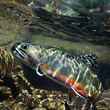



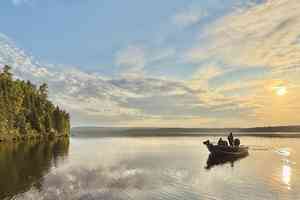
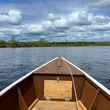
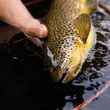
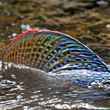



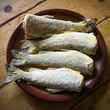






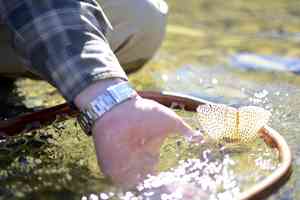
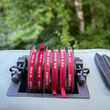
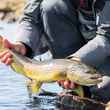
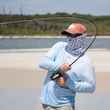



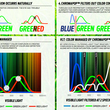
Comments